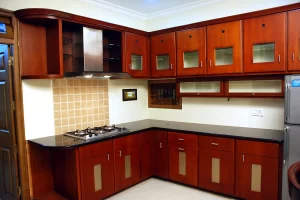DIY Home Fermentation Stations and Kitchen Science Setups

Your kitchen is more than a place for meals. It’s a laboratory. A place of bubbling transformation and delicious discovery. Honestly, creating a dedicated space for fermentation and kitchen science isn’t just a trendy hobby—it’s a gateway to better gut health, less food waste, and a deeper connection to what you eat.
Let’s dive into how you can build your own DIY fermentation station, a corner of your countertop where science and flavor collide.
Why Bother with a Dedicated Fermentation Space?
Well, for starters, it keeps the chaos contained. A stray brine drip or an over-enthusiastic kombucha culture is no big deal when you’ve planned for it. A dedicated station gives your projects a consistent home, which is key for maintaining the right temperature and avoiding cross-contamination.
Think of it as a command center for your culinary experiments. Everything you need is right there. No more rummaging through drawers for that airlock or wondering where you left the pH strips. This kind of organization, you know, makes the process less intimidating and more fun. It turns a project into a practice.
The Core Components of Your Fermentation Station
You don’t need a ton of fancy gear to get started. In fact, you probably have most of this already. Here’s the deal on the essential toolkit.
Vessels: The Heart of the Operation
Your jars and crocks are where the magic happens.
- Mason Jars: The undisputed champion. Versatile, cheap, and readily available. Perfect for small batches of sauerkraut, pickles, or fermented hot sauce.
- Fido Jars: These glass jars with clamp-down lids are fantastic for anaerobic ferments. They allow gas to escape without letting oxygen in, creating a simple, natural airlock system.
- Fermentation Crocks: The professional’s choice for large batches of kimchi or sauerkraut. They often have water channel lids to create a perfect seal.
- Continuous Brew Kombucha Vessels: These typically have a spigot at the bottom, allowing you to draw off finished tea without disturbing the main SCOBY hotel.
Lids, Airlocks, and Weights
Keeping oxygen out and letting CO2 escape is the name of the game. This is where you can get a little technical.
- Airlocks: These nifty little devices, often filled with a bit of water, let carbon dioxide bubble out while preventing outside air (and its contaminants) from getting in. They are a game-changer for consistency.
- Fermentation Weights: Glass or ceramic weights keep your vegetables submerged under the brine. This is non-negotiable. Exposure to air is an open invitation for mold.
- Pickle Pipes/Pebbles: These are specialized silicone lids and weights designed specifically for wide-mouth mason jars. They make the whole process almost foolproof.
Setting Up Your Station: A Practical Guide
Okay, you’ve got the gear. Now, where does it all go? Here’s a simple plan to organize your DIY kitchen science lab.
| Zone | Purpose | What to Keep There |
| Primary Workspace | Chopping, mixing, packing | Cutting board, chef’s knife, large mixing bowls, salt, spices |
| Active Fermentation Zone | Where jars sit while bubbling | Fermenting vessels on a tray (to catch spills), airlocks, a cloth for covering |
| Tool & Supply Caddy | Storage for all small items | Weights, pH strips, measuring spoons, funnels, rubber spatulas, permanent markers |
| Curing/Cold Storage | For finished or slow ferments | A dedicated fridge shelf or a cool, dark cupboard for aged ferments |
A simple baking sheet or tray is your best friend. Place all your active ferments on it. Trust me, it will save your countertops from the occasional overflow—a phenomenon I like to call “burping the jar a little too late.”
Beyond Fermentation: Embracing Kitchen Science
Once you catch the bug, you might find your station evolving. It starts with sauerkraut, but soon you’re peering into the world of beginner home fermentation projects like sourdough, vinegar, and even cheese.
Your station can adapt. That’s the beauty of it.
Sourdough Starter Corner
All you need is a clean jar, a digital scale for precision, and a consistent spot for your starter to live. It becomes a pet, really. A sticky, bubbly, slightly sour-smelling pet that makes incredible bread.
Vinegar & Shrub Station
Turn apple scraps into apple cider vinegar or mix up a berry shrub (a drinking vinegar) for cocktails. This requires a different kind of vessel—often wide-mouthed and covered with cheesecloth to allow for oxygenation, the opposite of what you do for lacto-ferments.
Troubleshooting Common Fermentation Station Woes
It’s not always perfect. And that’s okay. Here are a few quick hits for when things go sideways.
- Kahm Yeast: That white, filmy layer on top? It’s generally harmless, but it can affect taste. Just skim it off and carry on. It’s a sign of exposure to air, so check your weights and seals.
- Mold: Fuzzy, blue, green, or black mold is a different story. If you see this, it’s safest to toss the entire batch. This is why keeping everything submerged is so, so important.
- Slime: Some vegetables, like okra, can get a bit slimy. It’s usually a textural thing, not a safety issue. A bit of extra salt or a bay leaf in your next batch can help.
The key is to not get discouraged. Every “failed” batch is a lesson. A data point. It’s all part of the process.
A Final Thought on Your Culinary Lab
Building a home fermentation station is more than just organizing jars. It’s about carving out a small space for patience and observation in a world that values speed. It’s a quiet rebellion against the sterile, the pre-packaged, the instantly gratifying.
You’re not just making pickles. You’re cultivating life, preserving abundance, and participating in one of humanity’s oldest food traditions. All from a corner of your kitchen counter.








